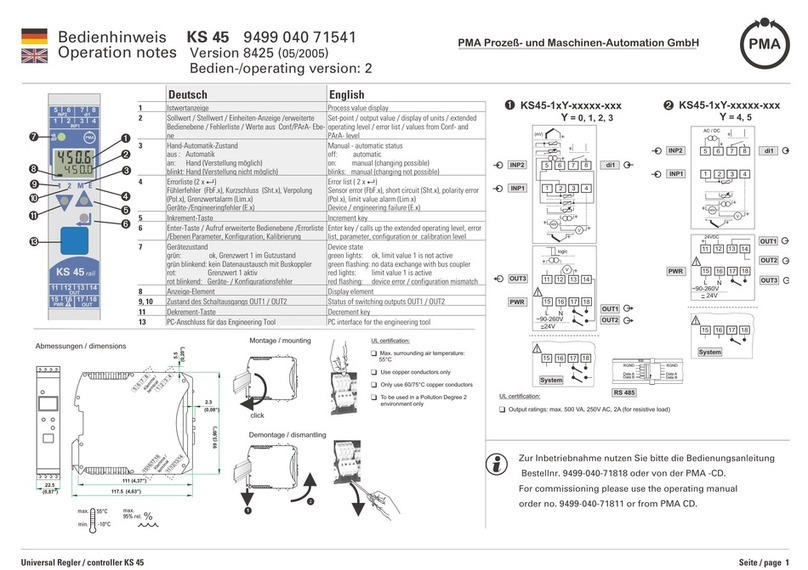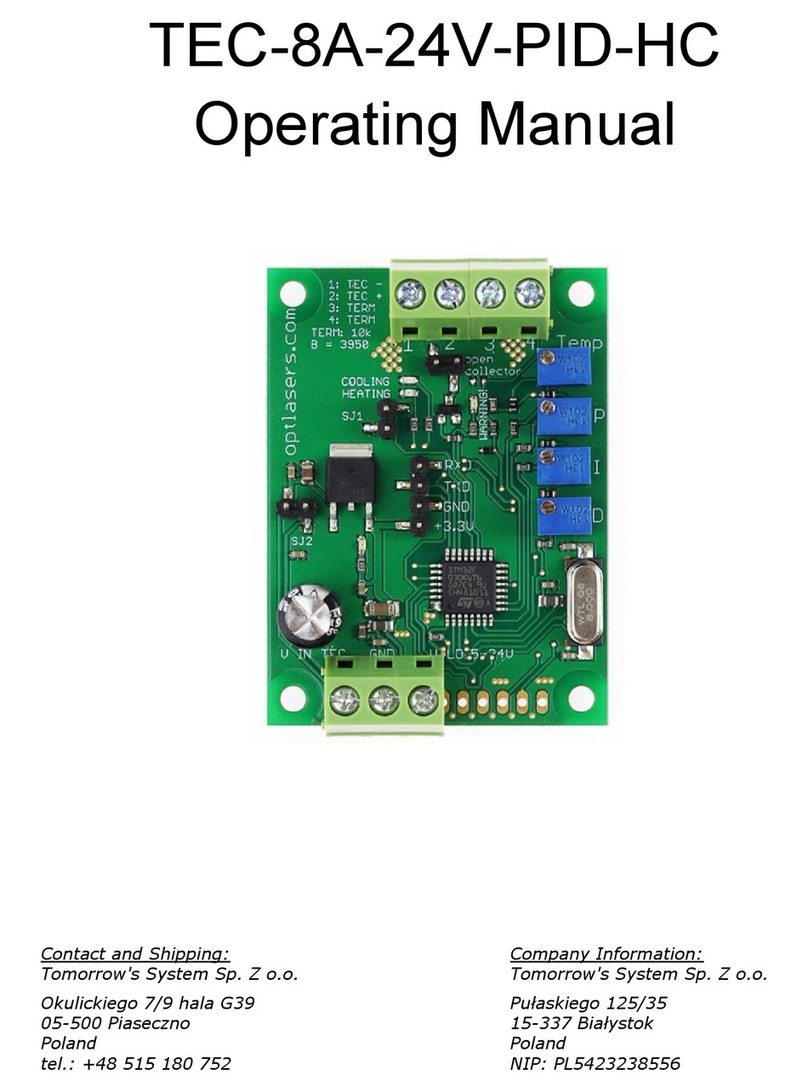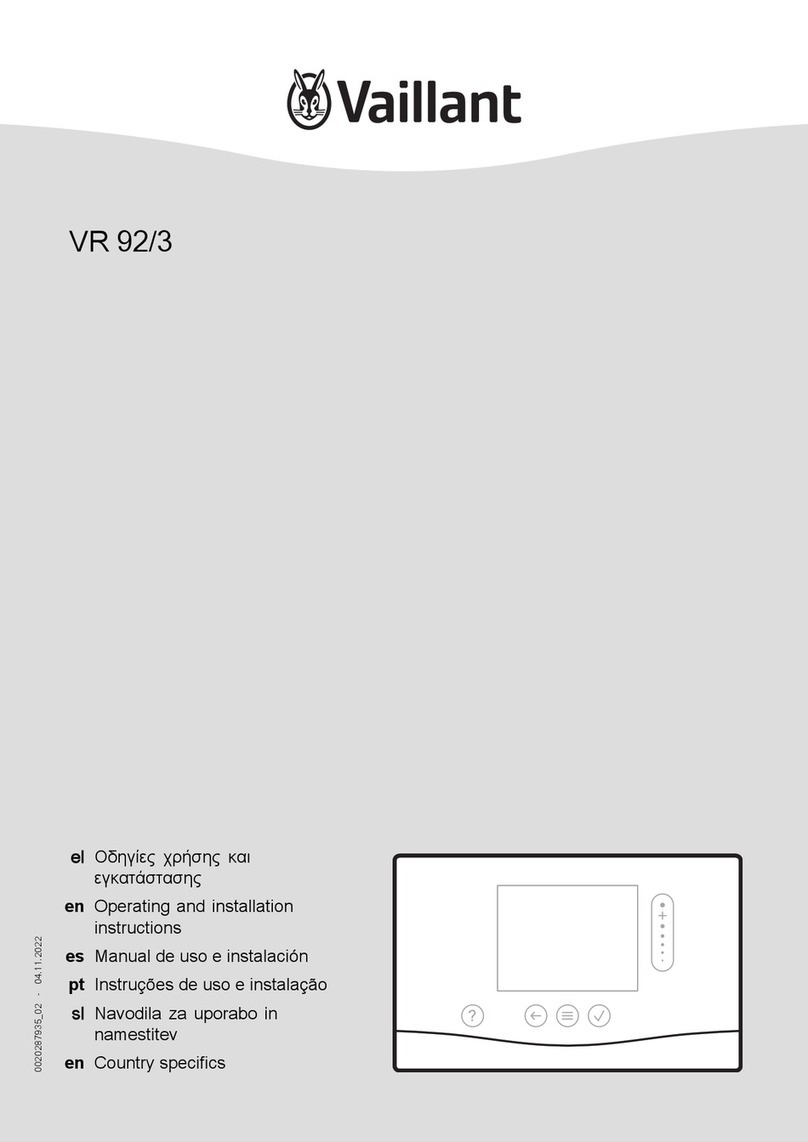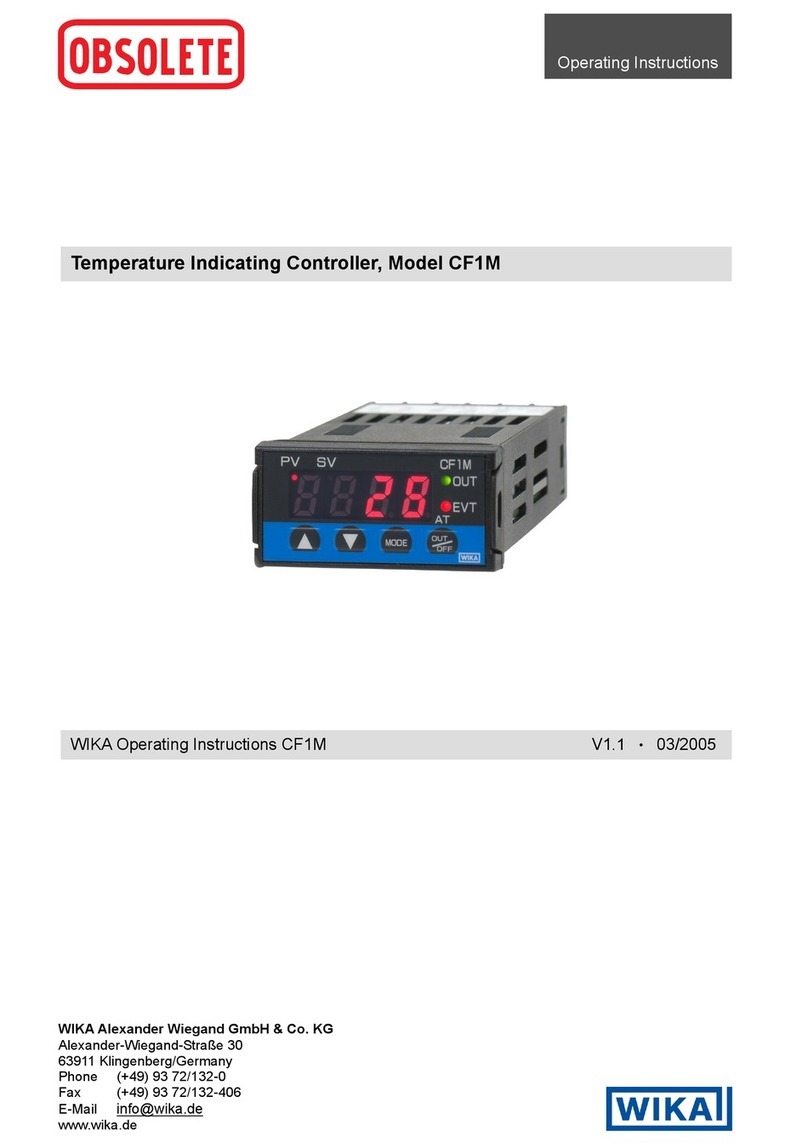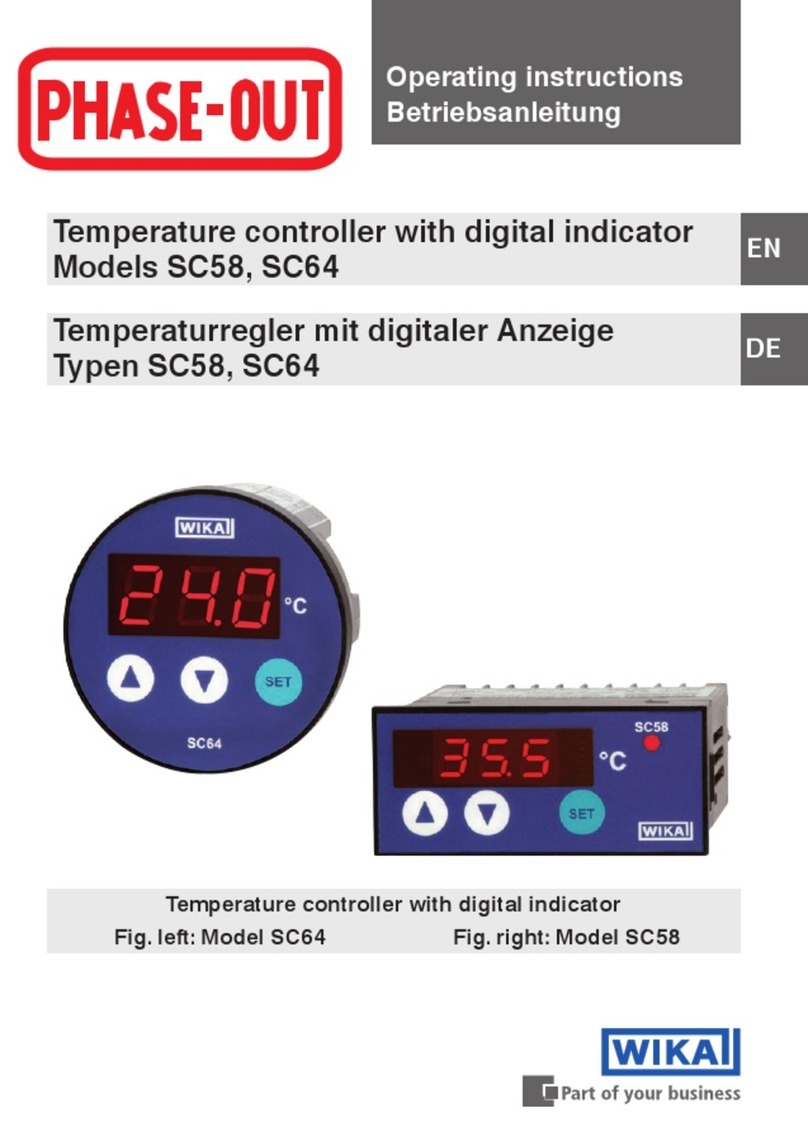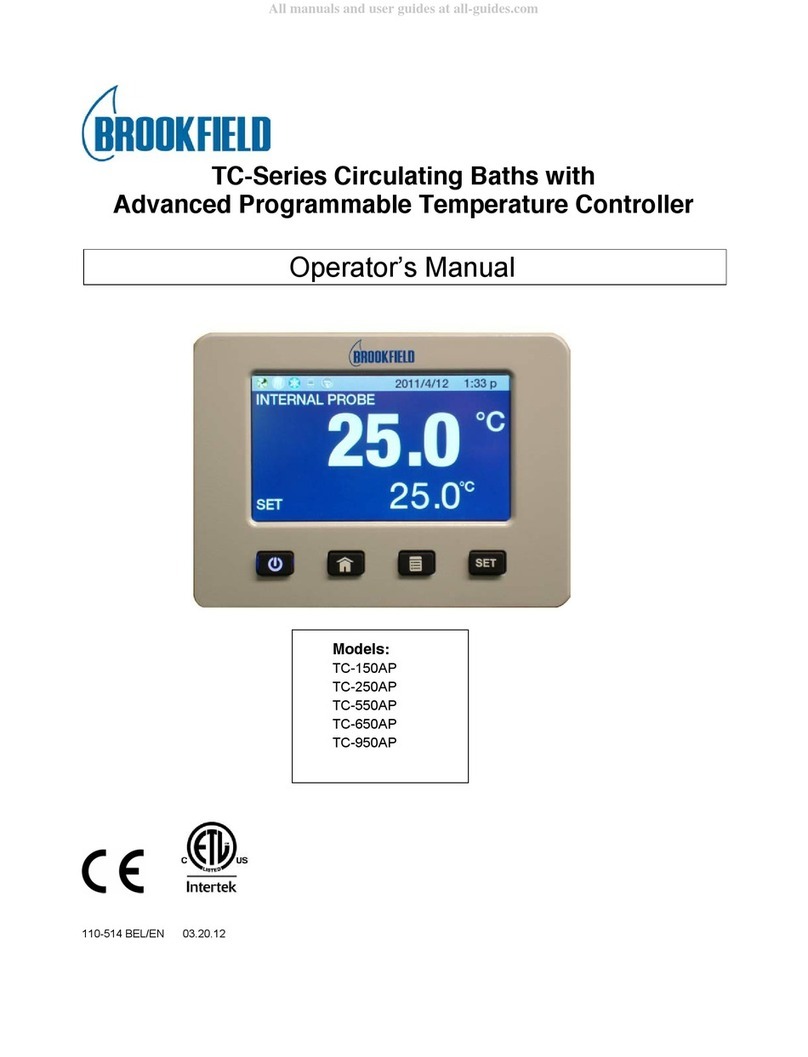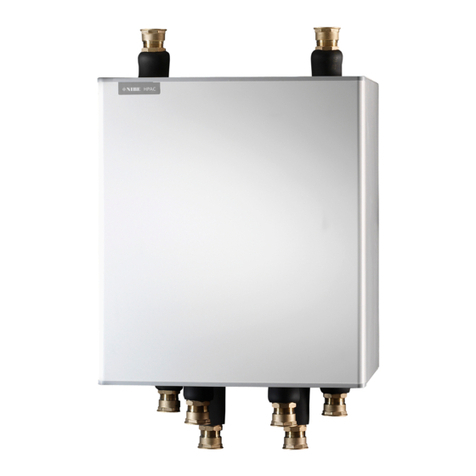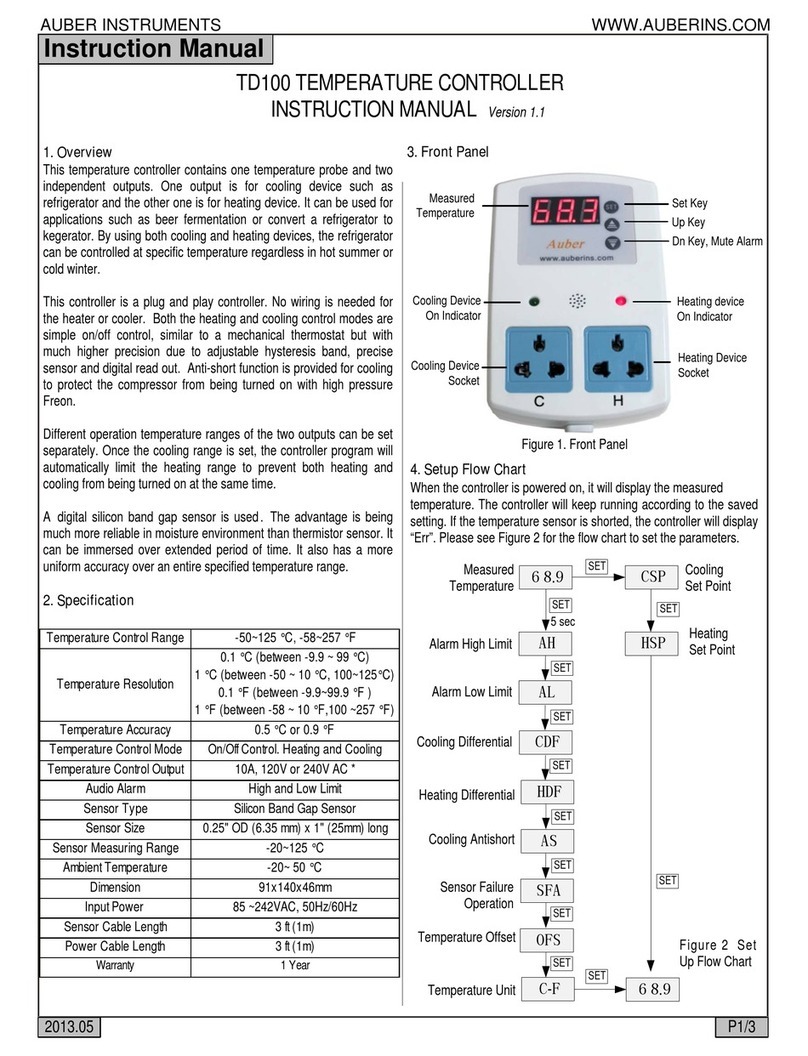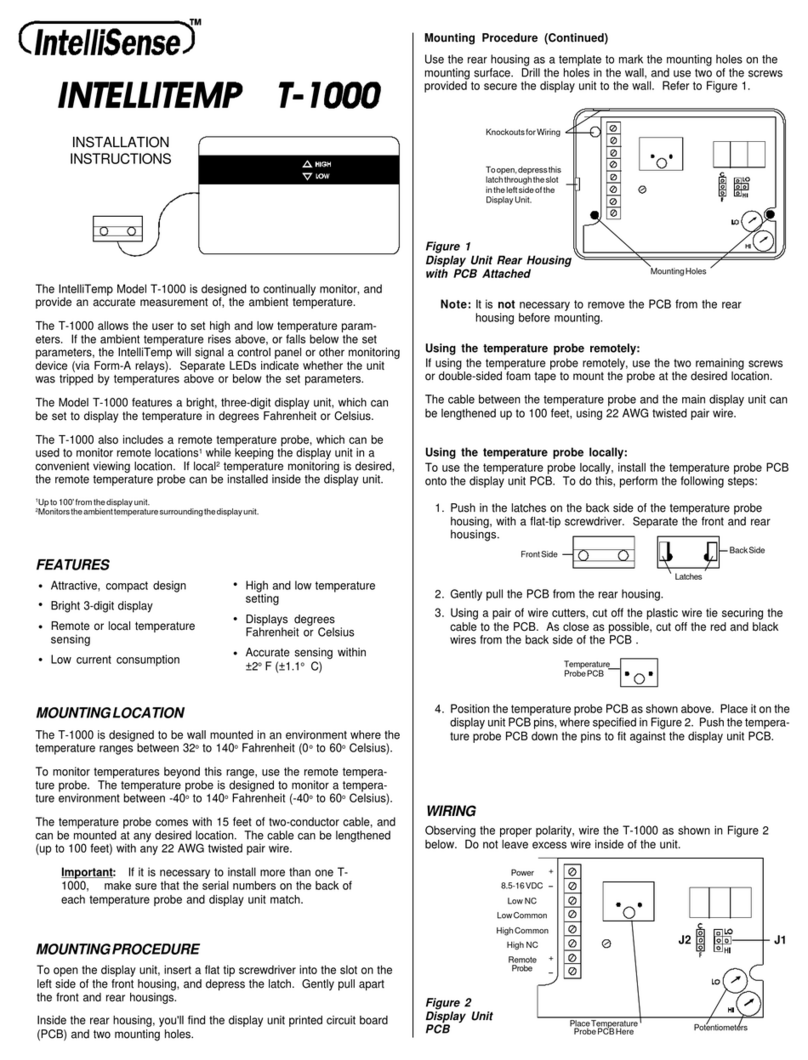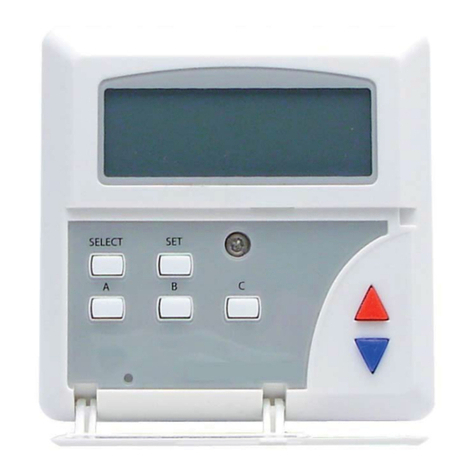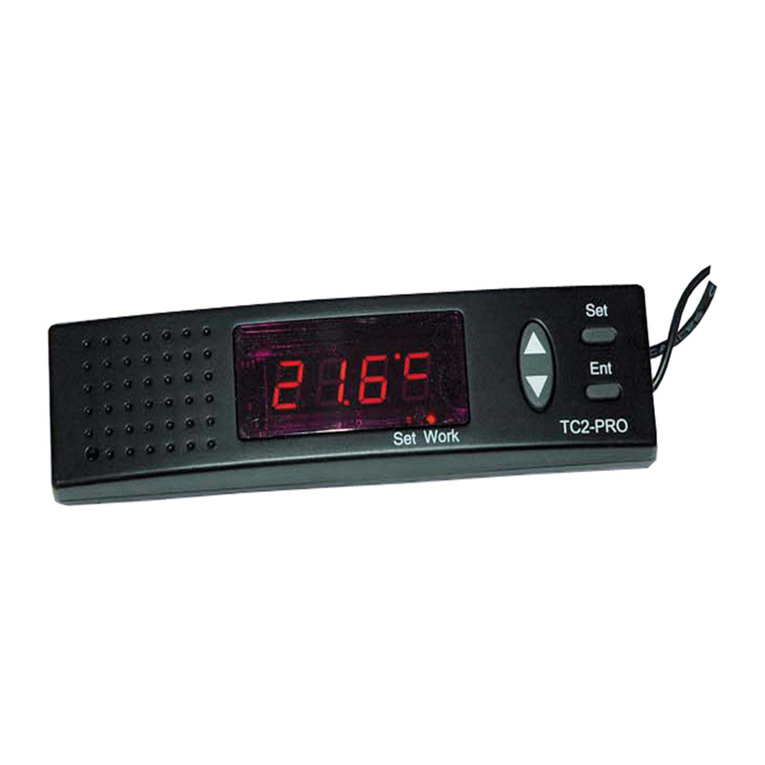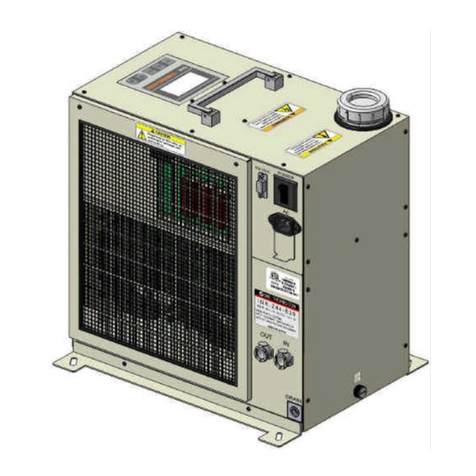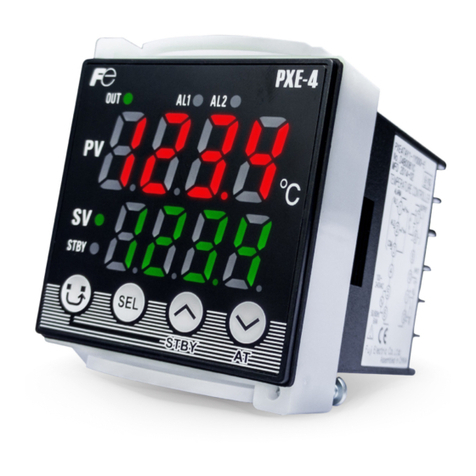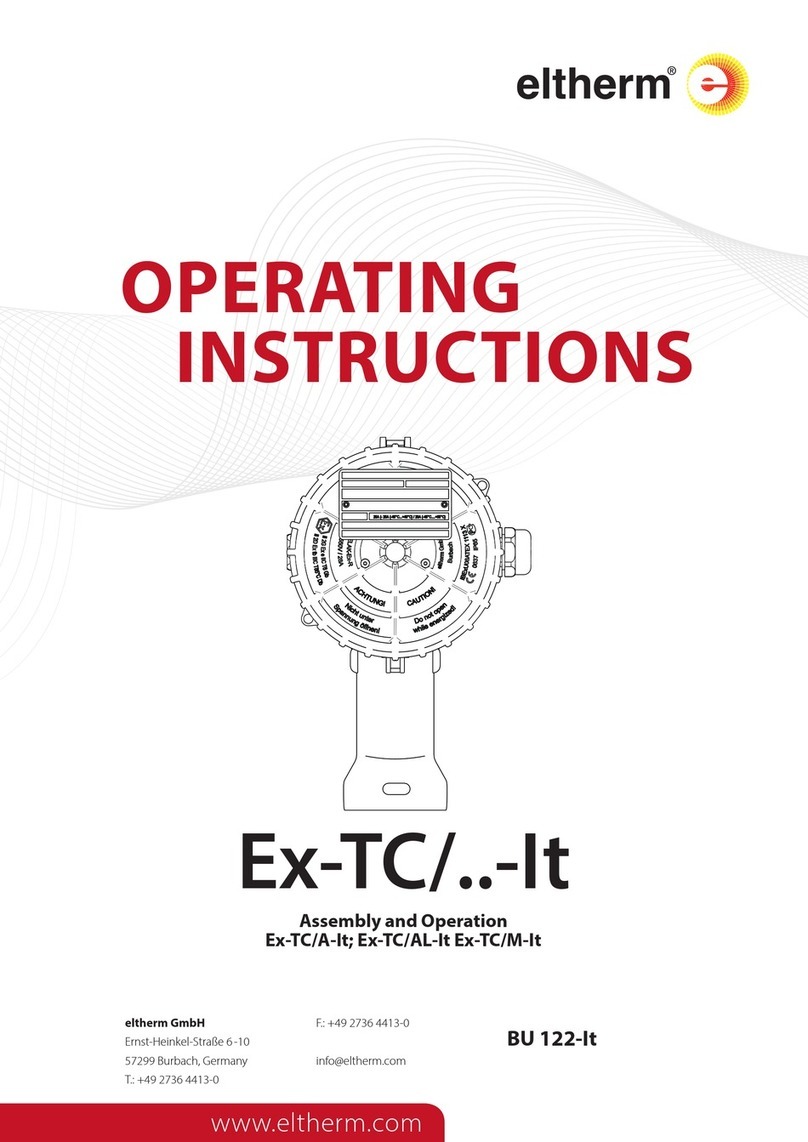Control mode PID, PI, PD, P, ON/OFF (congurable)
To determine the control parameters for PID control, auto tuning can
be activated.
Proportional band Thermocouples: 0 ... 1,000 °C
Resistance thermometers: 0.0 ... 999.9 °C
Standard signals: 0.0 ... 100.0 %
Integral time 0 ... 1,000 s
Derivative time 0 ... 300 s
Cycle time 1 ... 120 s (not available with analogue current signal control output)
Hysteresis Only available with ON/OFF control mode
Resistance thermometers and thermocouples: 0.1 ... 100.0 °C
Standard signals: 1 ... 1,000 (with a scaling of the input with one
decimal point, this is taken over by the hysteresis).
Alarm outputs, max. 2 (common contact terminal)
Alarm output 1 For actual-value monitoring
Alarm type, switch behaviour, hysteresis and time delay can be set
{Alarm output 2} 1) 2) Selectable as actual-value monitoring or control-loop monitoring, or as
actual-value and control-loop monitoring with combined output.
{Heater burnout alarm}
1) 2)
For single-phase heating systems (not possible with analogue current
signal control output), optionally congured up to max. 5 A, 10 A, 20 A or
50 A, the current transformer is included in the delivery
Relay contact 3) Loading: AC 250 V, 3 A (resistive load), AC 250 V, 1 A (inductive load,
cos ϕ = 0.4)
Options and performance data
{Parameter memory} 4) Memory for a 2nd set point, can be activated through the short-circuit of 2
connection terminals on the rear of the controller.
{serial interface} 4) RS-485
The transmission rate can be set (2,400 bps, 4,800 bps, 9,600 bps or
19,200 bps).
Power supply AC 100 ... 240 V, 50/60 Hz (max. permissible 85 ... 264 V) or
AC/DC 24 V, 50/60 Hz (max. permissible 20 ... 28 V)
Power consumption approx. 8 VA
Case
Material Polycarbonate
Colour black
Ingress protection Front: IP 66, Rear: IP 00 (per IEC 60529/EN 60529)
Weight approx. 200 g
Mounting Screw type mounting brackets for wall thicknesses from 1 to 15 mm
{ } Items in curved brackets are optional extras for an additional price
1) A combination of alarm output 2 or heater burnout alarm with relay output 2 is not possible.
2) When alarm output 2 and the heater burnout alarm are both available simultaneously, both alarms work o a single relay.
3) Is valid for alarm output 1 and alarm output 2 or heater burnout alarm.
4) From the options of the serial interface and the parameter memory, only one option can be selected at any one time.
3. Specications



